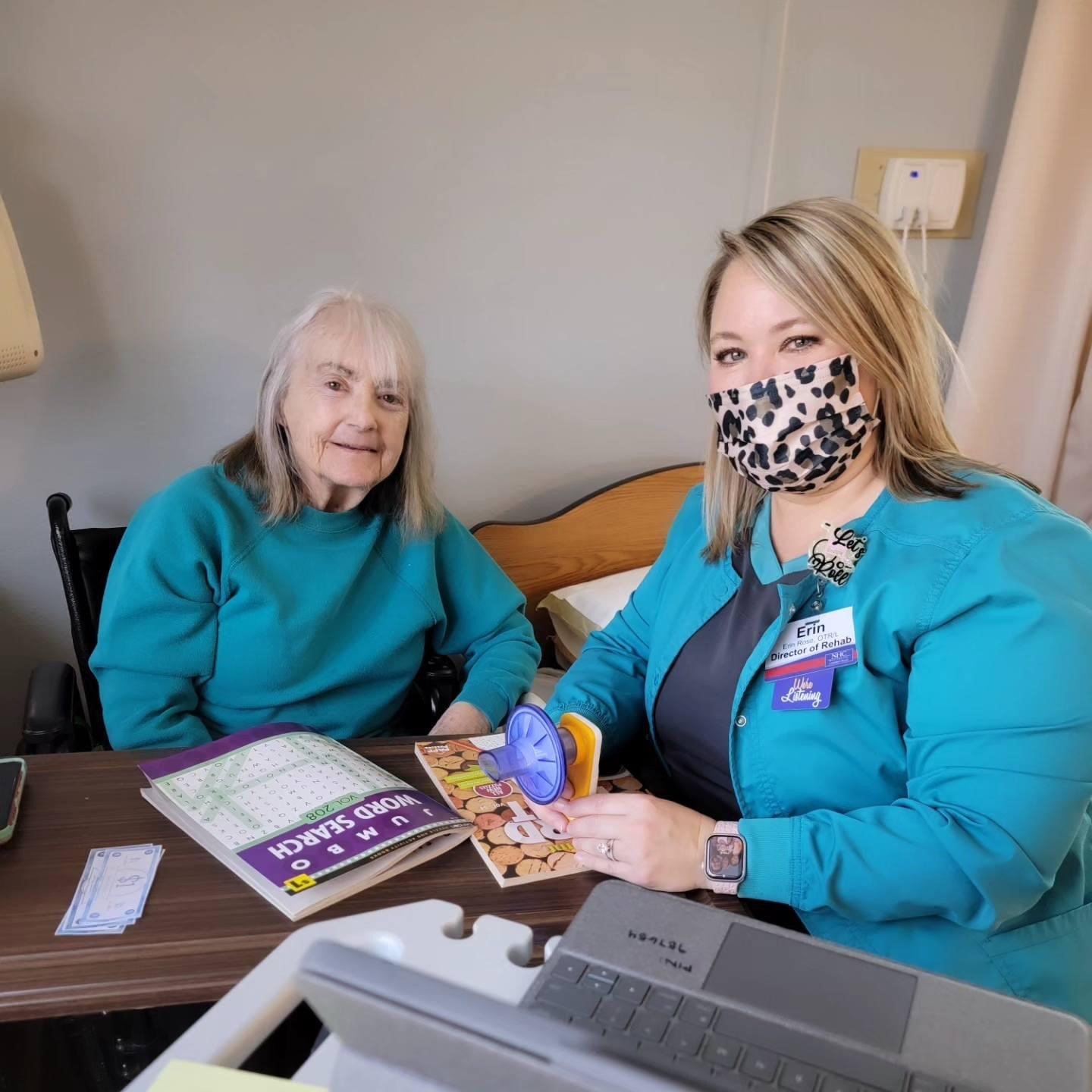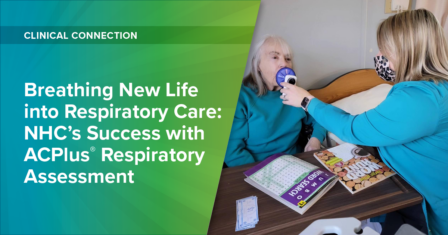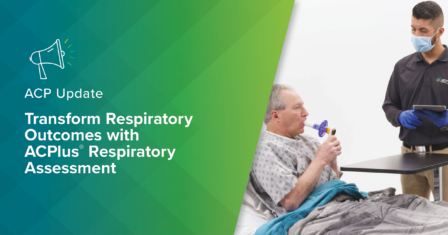Key highlights:
- NHC’s pilot of ACPlus® Respiratory Assessment (ARA) in 3 centers since June 2023 has significantly improved respiratory care.
- ARA has helped reduce rehospitalization rates by 36% and has ensured that Medicare and Medicaid submissions reflect the medical complexity of the patient population, enhancing patient care and financial performance.
- NHC plans to expand ARA to all 11 facilities, emphasizing staff buy-in, systematic implementation, and patient-focused benefits for success.
Respiratory care is a critical, often challenging, aspect of patient health in skilled nursing facilities. The ACPlus Respiratory Assessment (ARA) is changing this landscape, offering an innovative approach to identifying and managing respiratory issues. National Healthcare Corporation (NHC) recently piloted ARA in three of its facilities, with results that are transforming patient care and operational efficiency.

We spoke with Sarah Ison, Regional Therapy Director for NHC’s central region, to learn more about their experience with ARA, how they have been using it across their pilot facilities, and the results they have seen since implementing it in June 2023.
Implementing ARA
Various staff members, from nurses to therapists, can perform an assessment with ARA, allowing for flexibility in implementation. “Most of the buildings have three or four people doing the assessment,” Ison notes. “We have therapists doing it, nurses, and some nurse practitioners and respiratory therapists.”
After some trial and error, they found a sustainable workflow to ensure each new admission was assessed in a timely manner. “We test every new admission within the first three days,” said Ison. “For our long-term care population, we test quarterly and as needed if someone notices a change.”
Uncovering Hidden Health Issues
Ison reveals one of the biggest surprises they have encountered since adopting ARA is the volume of patients experiencing respiratory deficits who show no obvious symptoms. She estimates that of the patients they have assessed, 95% return results indicating a respiratory deficit. “It has really helped us to identify patients who would benefit from respiratory therapy, whom we might not have typically provided that service to,” said Ison.
Strengthening Documentation
In an era of frequent healthcare audits, ARA provides robust documentation and objective data that has been invaluable for NHC’s staff. “Our documentation is constantly being reviewed, so we have found it was extremely beneficial having those ARA results and the documentation of those deficits to support what we were capturing on the MDS,” said Ison.
ARA’s Impact by the Numbers
One of NHC’s inpatient facilities saw significant year-over-year improvement, which Ison attributes in part to their use of ARA starting in June 2023:
- Rehospitalization rates dropped 36% from May 2023 vs May 2024
- Average daily Medicare Part A reimbursement increased by 4%
- Medicaid reimbursement rose 7.4%
These numbers reflect not just financial value but also improved patient care and better outcomes.

Finding Success with ARA
For those interested in implementing ARA in their facility, Ison offers the following framework to extract the most value from the tool:
- Secure buy-in from leadership and key staff members
- Develop a systematic approach to conducting assessments
- Remain flexible and willing to adjust processes
- Focus on the patient benefits to motivate staff
Looking Ahead
As a testament to ARA’s success, NHC plans to roll out ARA across all 11 facilities in Ison’s region. NHC’s experience with ARA emphasizes how early detection of respiratory deficits can transform patient care. By providing precise data and robust documentation, ARA is helping facilities like NHC deliver more comprehensive, targeted care for better patient outcomes.
Transform Respiratory Outcomes with ARA
Interested in bringing ARA to your skilled nursing facility? Learn more and request a demo today.
National Healthcare Corporation’s (NHC) experience does not represent a claim made by Accelerated Care plus. Your results with ACPlus® Respiratory Assessment may vary.
MRK-BLOG-011
Respiratory care is a critical, often challenging, aspect of patient health in skilled nursing facilities. The ACPlus Respiratory Assessment (ARA) is changing this landscape, offering an innovative approach to identifying and managing respiratory issues. National Healthcare Corporation (NHC) recently piloted ARA in three of its facilities, with results that are transforming patient care and operational efficiency.


